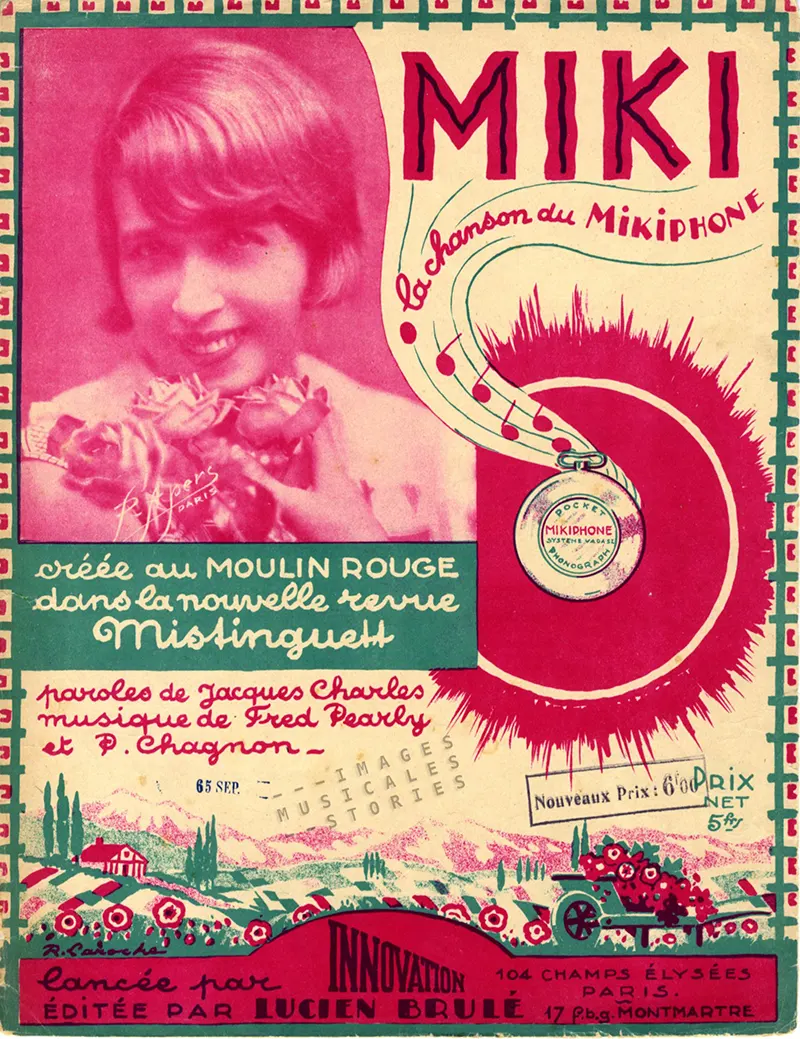In the roaring twenties, a period marked by jazz, flappers, and unprecedented technological advancements, a remarkable invention emerged that would pave the way for the future of portable music—the Mikiphone. This pocket-sized phonograph, devised by Hungarian siblings Miklós and Étienne Vadász, represented a fusion of innovation and convenience, offering music lovers the unprecedented ability to take their favorite tunes with them wherever they went.
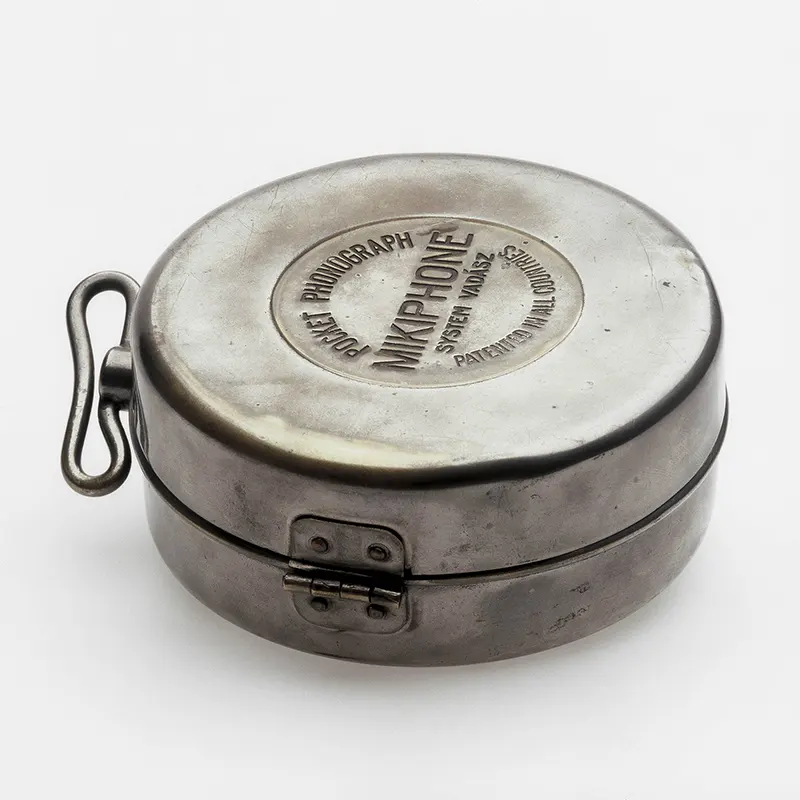
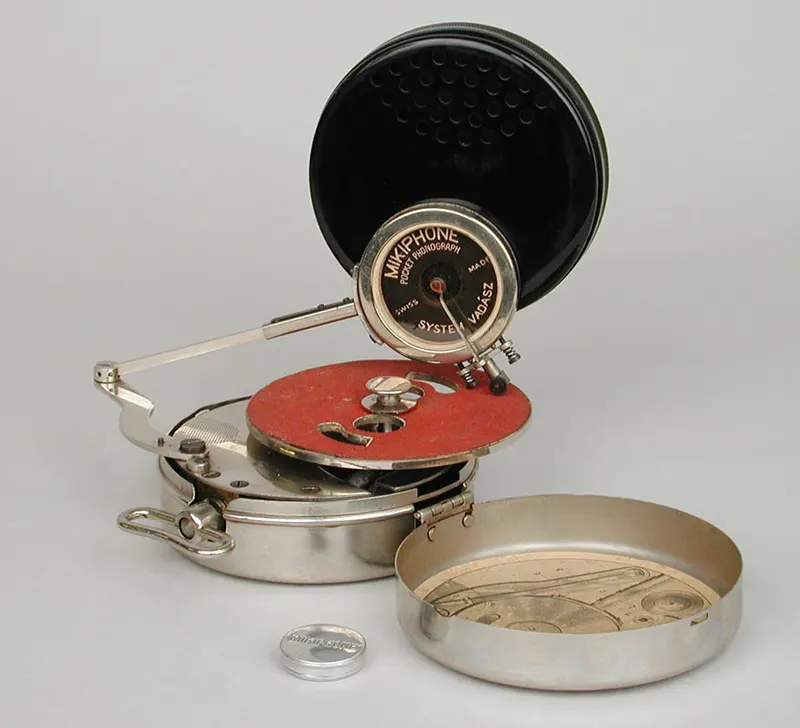
It was a portable phonograph small enough to fit in one’s pocket, a feat that, at the time, seemed almost magical. The device was manufactured under a licensing agreement with Maison Paillard, a company based in Saint Croix, Switzerland, known for its rich history in crafting music boxes and precision instruments.
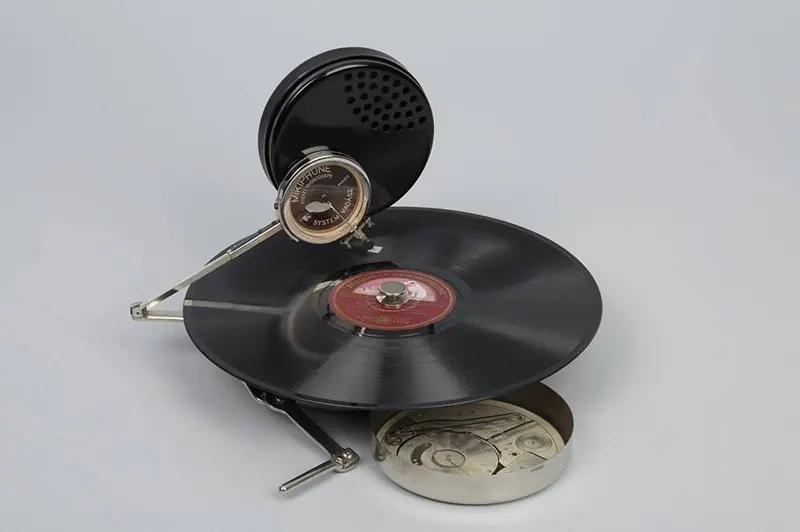
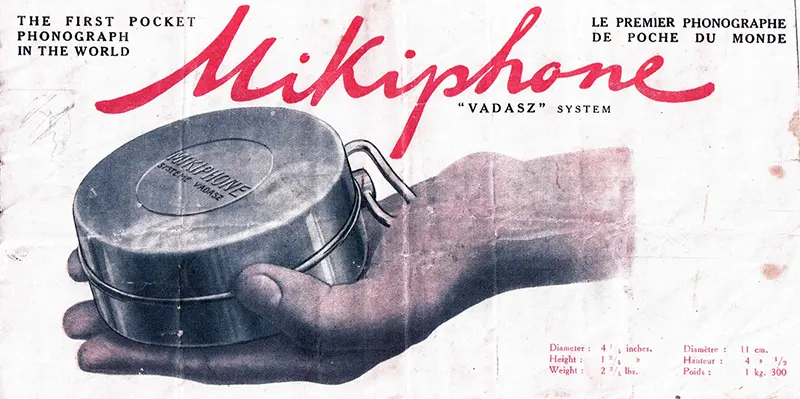
Maison Paillard, with its origins tracing back to a collective of local watchmakers in 1814, had by the 1860s already established itself as a reputable maker of music boxes. The transition to creating phonographs and later gramophones seemed a natural progression for the company, which had always been at the forefront of musical innovation.
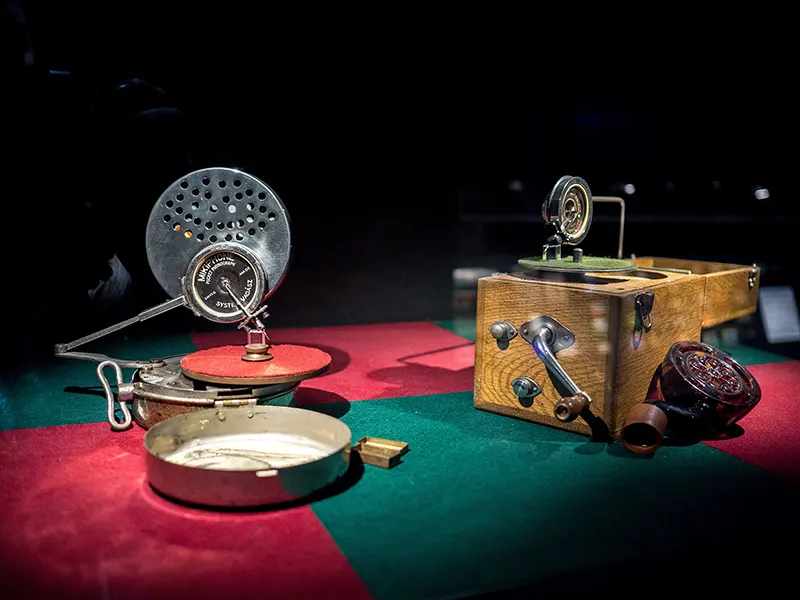
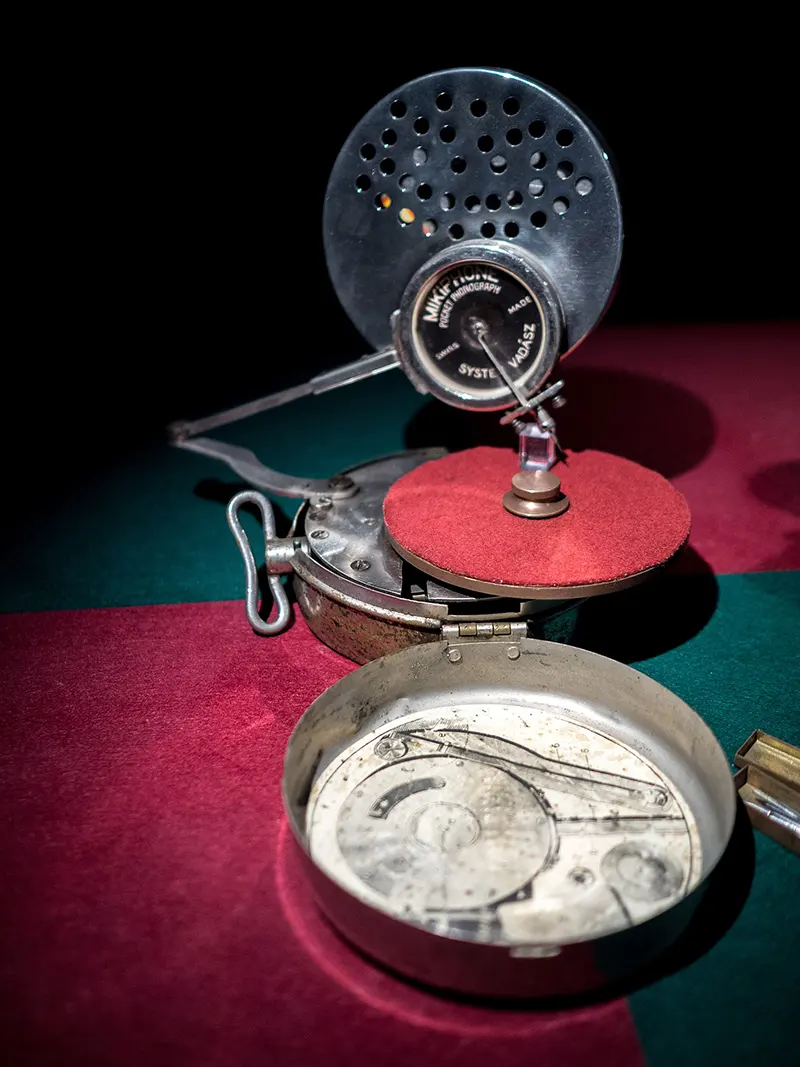
At first glance, the Mikiphone, with its case closed, appeared disarmingly compact, easily tucked away into a purse or pocket. Yet, its functionality required a bit of assembly, a small trade-off for the portability it offered. The device’s components, neatly stored within the case, had to be assembled before use. This included connecting the recording head and a two-piece Bakelite resonator to the foldout tone arm and placing the shellac disc on the turntable’s central pin. With a diameter of just 11.5 cm and a thickness of 4.7 cm when shut, the Mikiphone was a marvel of engineering.
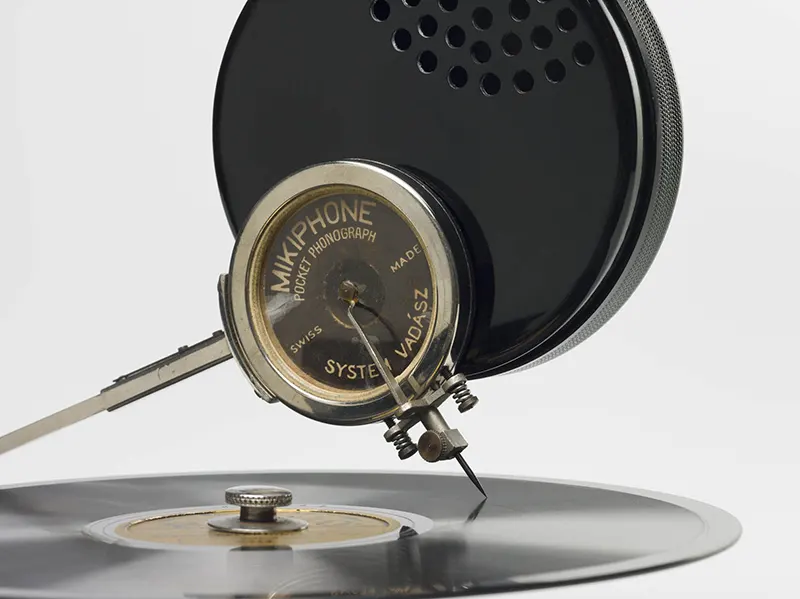
What set the Mikiphone apart from other phonographs of the time was its operation without batteries. Instead, it relied on a hand-crank for power, with its sound amplified through a resonator.
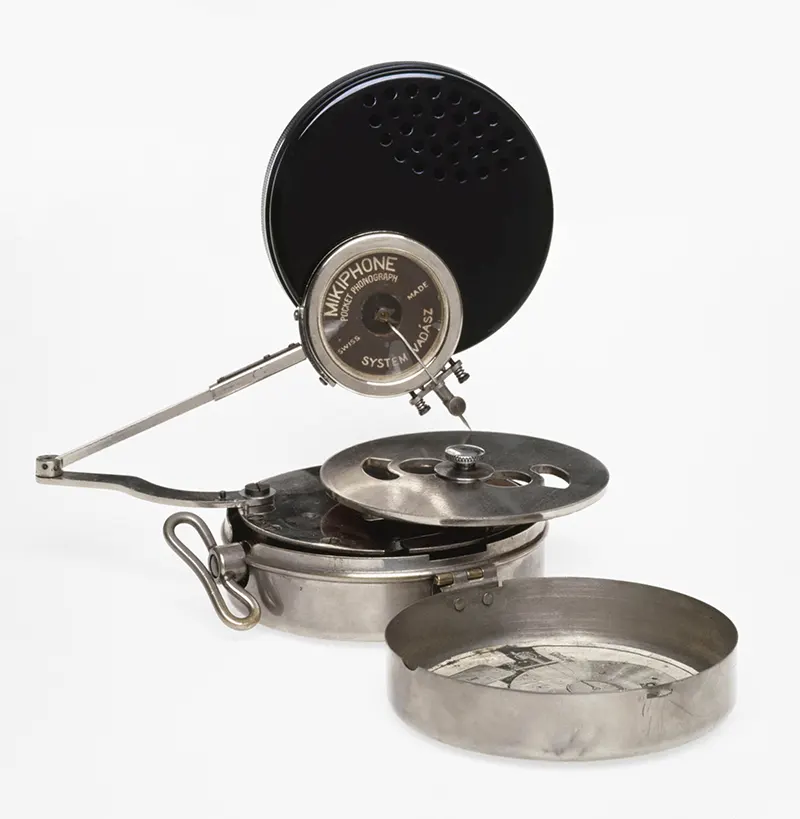
The Mikiphone entered mass production in the mid-1920s, with Maison Paillard manufacturing approximately 180,000 units of this innovative device. The company, which had fully transitioned to disc gramophones by 1905 and introduced an electric AC gramophone motor in 1913, continued to expand its offerings. From 1927 onwards, Paillard ventured into electric amplifiers for gramophones and later into radio equipment production.
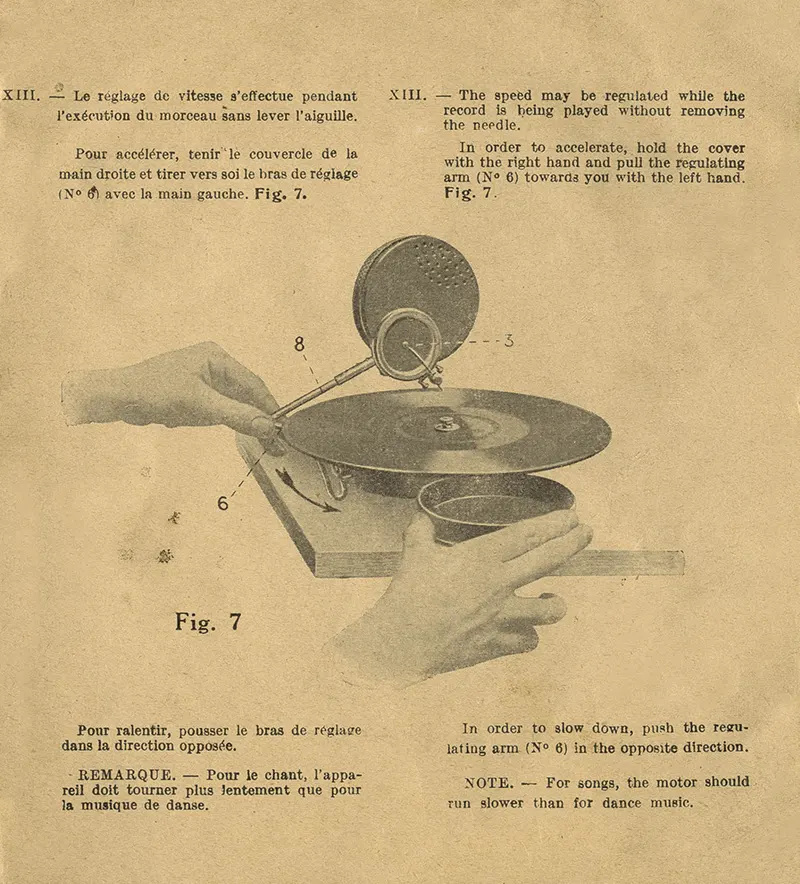
The collaboration between the Vadász brothers and Paillard not only resulted in the creation of the world’s first pocket record player but also marked a significant milestone in the history of portable music devices.
The Mikiphone stood out not just for its size and portability but for the vision it represented—a future where music could accompany one on any adventure. Its design and functionality captured the imagination of the era, making it a coveted item for music enthusiasts and a symbol of technological progress.
